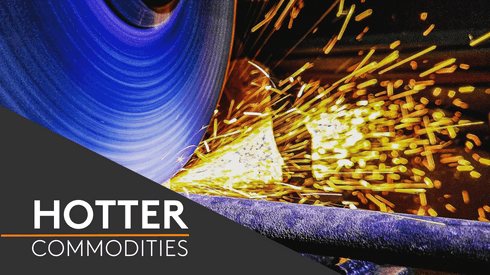Supply tightness, geopolitics and logistics constraints pushed prices to record highs in the first half of 2022.
In the second half of the year, fundamentals across the cobalt value chain flipped weak demand following Covid-related lockdowns in China while bearish global macroeconomics pushed prices down steeply.
Only three times in its recorded price history has cobalt metal broken above $40 per lb. Those three years were 2008, 2018 and 2022.
While market fundamentals are different this time, the current direction of price movements almost mirrors those earlier years.
What followed on those occasions was significant downward price trends, with the price of standard-grade cobalt closing the year down by 68% and 39% respectively from the previous years’ highs.
The standard grade price was down by 51% from the year-high on December 30, 2022.
Fastmarkets assessed the price of cobalt, standard grade, in-whs Rotterdam at $18.75-19.95 per lb on December 30, down by 51% from its 2022 high of $39.75-40.50 per lb on May 3.
One difference in 2022 was that the electric vehicle (EV) sector is more developed from a demand perspective for cobalt than it was in 2008 and 2018.
Some market participants have said that they expect the market to be supported firmly in 2023 and beyond, with EV numbers expected to increase to meet global policy targets.
Fastmarkets research forecasts that cobalt demand should increase to 194,000 tonnes in 2023, from an estimated 177,000 tonnes in 2022.
But total cobalt supply is also forecast to increase, up to 209,000 tonnes from an estimated 182,000 tonnes in 2022, leaving a surplus of 15,000 tonnes.
Cobalt output from the Democratic Republic of Congo rose by 24% during 2022, according to estimates from Fastmarkets research. This was despite numerous disruptions affecting the traditional supply route of cobalt hydroxide from the DRC to China via South Africa.
Metal consumers delaying negotiations
A very large proportion of the cobalt metal demand from consumers is met under long-term contracts. Such annual contracts are usually agreed in the fourth quarter of the preceding year, and the pricing mechanism is usually offered as a discount to the spot price.
One cobalt producer said that the long-term contract negotiating period has extended longer than expected this time. While traders have reported that most negotiations were complete, some consumers were said to have opted to push back negotiations in an attempt to gain larger discounts in the new year.
“We’re leaving the signing of contracts to January or February,” one consumer said. “It’s advantageous to wait. The longer we wait, the bigger the discounts. Our own potential customers also want to wait.”
Some traders have echoed this sentiment. “People see prices going down, and they don’t want to lock-in yet,” one said.
Other traders have been more bullish, noting that many of their contracts with consumers have been signed with spot market sentiment more a fault of seasonal liquidity than market fundamentals.
“All our alloy-grade contracts are agreed. Those consumers have the long-term contract volume being delivered from the beginning of 2023, so are happy to sit back from the spot market for a couple weeks. With the [year-end] holidays [at the moment], it’s just not the right time for spot liquidity,” a second trader said.
Still, some say that upside risks remain for those looking to hold back from signing long-term contracts for potential discounts.
“There is minimal availability of western metal brands from producers,” a third trader said. “These guys are telling me they are sold out for most of next year, so I don’t see any further discounts coming. If anything, things will tighten up as the months progress.”
Delays in cobalt hydroxide
Consumers in the cobalt hydroxide market also opted to push back on agreeing long-term deals, citing market uncertainty based on questions about demand and supply disruptions.
“We may start negotiations of the annual contract for cobalt hydroxide in the first quarter of 2023,” one source said. “We are well stocked, and the backlog of material at ports is also large… so we are in no hurry to start negotiations now.”
MHP offers alternative supply
In October, Fastmarkets’ began its pricing assessment of nickel mixed hydroxide precipitate (MHP) feedstock. MHP is a nickel sulfate feedstock which also contains cobalt and manganese, and is considered a ‘ready-made’ feedstock for battery production, according to one source.
“There is some price pressure on cobalt intermediates because of MHP availability,” one cobalt market participant said. “Cobalt metal will also get this price pressure as a knock-on effect from the increased availability of cobalt hydroxide. Some battery producers prefer MHP for [nickel–cobalt–manganese] batteries because it’s a ready-mixed product.”
Keep up to date with the latest news and insights on our cobalt market page.




